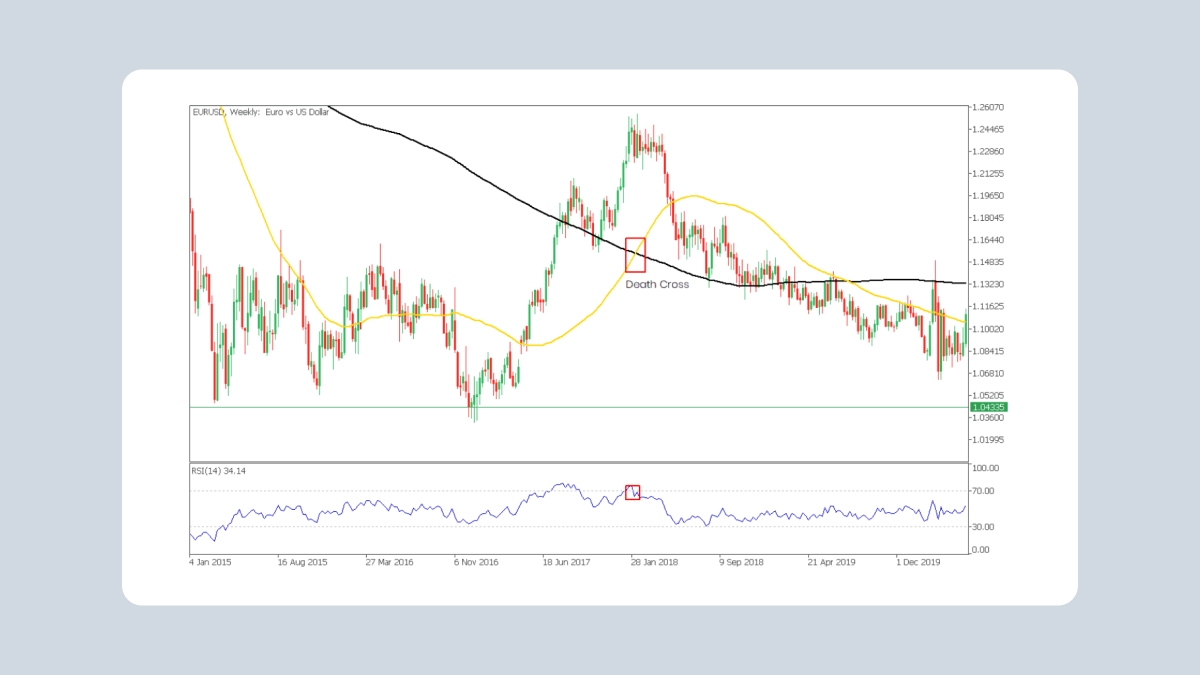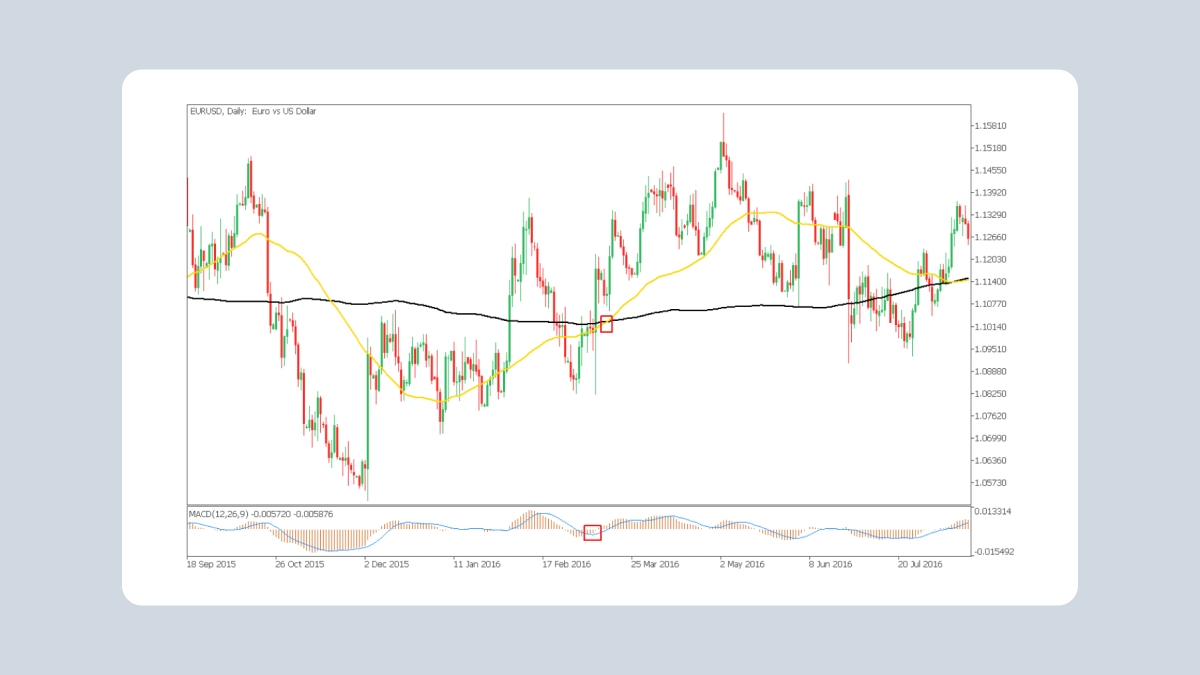3. Bollinger bands
Bollinger bands bring volatility into the mix by enveloping prices within upper and lower bands. If prices breach the upper band after a bullish MA crossover, traders interpret this as strong upward momentum. Alternatively, contracting bands paired with an MA breakout signal that a significant price shift may be imminent.
Practical applications
Across asset classes, moving averages offer consistent value.
Forex strategy
Picture a trader analyzing the USDJPY currency pair. A 20-day EMA along with a 50-day WMA shows the pair trending upward. When the 20-day EMA crosses above the 50-day, coupled with price clinging to the upper limit of moving average envelopes, the trader sees an optimal buy opportunity.
Stock scenario
Consider a scenario where a biotech stock consolidates just below its 200-day SMA. After a series of positive news events, the price dramatically breaks above the 200-day SMA on high volume, signaling a powerful breakout rally. Traders might use this move to establish long positions, confident that momentum will carry the stock higher.
Limitations of moving averages
Despite their many advantages, moving averages have limitations. Their reliance on historical data makes them lagging indicators, often delivering signals after the trend is already underway.
Additionally, in range-bound or sideways markets, MAs can generate misleading signals, with prices repeatedly crossing the MA without establishing a firm direction.
To mitigate these challenges, traders can extend timeframes to reduce the impact of noise or combine moving averages with other indicators, such as volume analysis, to refine market insights. Fundamental analysis can further complement MAs, providing a fuller trading picture.
.jpg)


